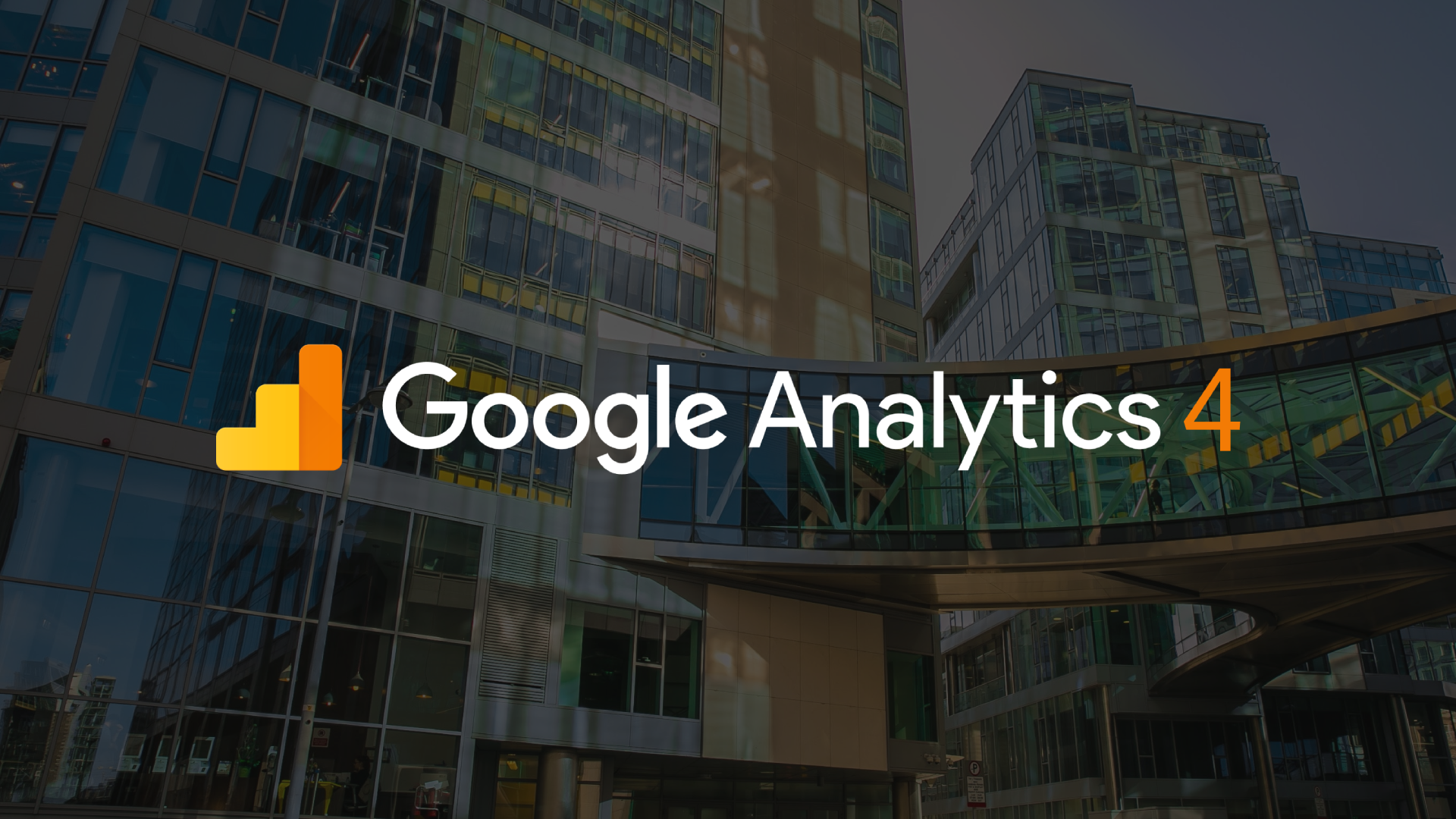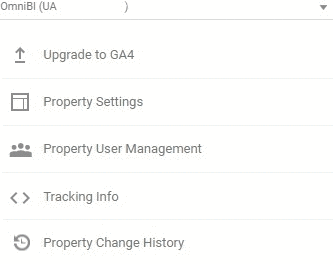
Observant (and lucky) members of the digital marketing and development community may have been privy to spot the beta release of the brand new Google Analytics 4 (GA4) update, which surfaced in October 2020. As far as current reports are concerned, it appears that it’s not a full release just yet and is very much in beta, with a proportion of long-standing and active Google Analytics users being able to access it.
Google Analytics and Google Analytics 4
Google’s Analytics is probably the most widely used reporting tool, tracking a unfathomable volume of behavioural and analytical data for millions of businesses and websites worldwide. Its ability to track user interaction on websites and apps is relatively unparallelled. It’s primarily used to track website traffic and user behaviour on-site, but as the go-to home for many digital marketers, it’s become increasingly useful in monitoring the impact of other important marketing channels, often influencing/dictating a business’ digital KPIs.
Described as a ‘vision for the future’, the new Google Analytics 4 comes with a number of new features which distinguish it from the current/old platform, a key motivator for which has been the increase in cookie-blocking and consent (thanks in part to directives like the GDPR in the EU for example). More and more of your website users will be changing their cookie preferences, and blocking vital Javascript executions which allow you to track behaviours on your site and, more importantly, follow your users around the web and social media to serve them targeted ads. Rightly or wrongly, this is a challenge now for digital marketers, one which Google thinks it can help overcome, the methods of which we’ll explore in this article. Google outlined some of the key differences between Analytics and Analytics 4 in an article, some of which we’ll unpack here too.
In summary, Google is looking to create a durable, privacy-first and user-centric, cross-channel measurement platform with prediction and action in mind. In this video, Krista Seiden runs through an overview of the new Google Analytics 4 property:
Wondering if you can benefit from these updates? Eligibility can be determined by heading into your GA settings – if you see the ‘Upgrade to GA4’ CTA, you can complete the set-up wizard and get started! Don’t worry if you don’t yet have access, there are likely to be teething problems with a beta version, and Google is always learning so sometimes better things come to those who wait!

Hoorah, 2020 isn’t a complete write-off!
For those of us into digital and data, this is actually a real opportunity to celebrate, as we think GA4 actually brings some really useful benefits to an ageing platform which, although receiving valuable upgrades over the years, has hit some limitations recently. Our clients, and the wider market at large, are becoming increasingly data-driven, and GA in its current guise occasionally leaves those looking for more advanced metrics lacking.
One plus point for those of you who do have early access is that updating your Google Analytics to V4 does not negatively affect your existing GA set up, so you don’t have to be worried about changes to your existing data, goal set ups, etc. It is currently being treated as a separate entity, alleviating fears that often come along with a beta. We did exactly this, and have been exploring GA4 for a little while now, and we’ve found a few key advantages already.
Here’s 5 useful benefits of Google Analytics 4:
- Improved Customer Journey & Engagement Tracking
- Simplified Goals and Events Setup (Yay!)
- AI & Analytics in a Cookie-less World
- Enhanced Visualisations and Reporting
- A Plethora of Parameters
1. Improved Customer Journey & Engagement Tracking
According to Google, Analytics 4 is very much focused on giving marketers a “more complete understanding of the customer journey across devices.”, becoming more granular and accurate when it comes to measuring the ‘golden egg’ of the end-to-end journey, as opposed to relying on users to marry up individual metrics across web/mobile, devices, pages, segments etc.
From acquisition, to retention, the new platform brings “data together at scale”. This is endorsed by the inclusion of a ‘Life Cycle Report’ function and new templated reports for things like e-Commerce funnels. This is something which has traditionally required some complex advanced set up, utilisation of GTM and custom tracking, but the idea that the new property can make this much more streamlined and simple is certainly music to our ears. Which leads us nicely into the simplification of goals, conversion and event tracking.
2. Simplified Goals and Events Setup
Termed ‘Event Editing and Synthesis’ by Google, this enables users to really hone their goal tracking and get granular behavioural data with little-to-no requirement for editing code, editing and optimising goal set up in the new UI. This extends to cross-domain measurement too. Formerly a rather complex affair, this is particularly useful when transactional functions are hosted on a sub-domain or third party site, for example, maximising efficiency and accuracy.
Out of the box, GA4 pre-creates a number of actions and events. Previously requiring manual set up, some default options include clicks, scroll behaviour, transactions, file downloads and a user’s first visit – the great thing about this is the ability to simply toggle these on as goals/conversions. This saves a huge amount of time, and no-doubt digital marketing specialists and conversion analysts everywhere are rejoicing at the removal of a layer of complication which hasn’t needed to be present for quite some time (see you later, Goal Set 1, Goal ID 17)!
Some form submission and ecommerce goals may not automatically be tracked, but the set up for these is now made much easier using the UI, and again requires much less time and effort to implement than in the previous GA version.
3. AI & Analytics in a Cookie-less World
As aforementioned, the key motivator behind the latest update is the move toward an increasingly cookie-less world. With the GDPR and enhancement of other privacy laws, as well as some browsers like Mozilla’s Firefox, it is becoming harder and harder to cookie-track users around your site and across platforms. GA4 brings in a layer of AI to “fill in the gaps” left by this shift.
With machine learning as a contributor to data measurement, GA4 can use “modeling” that can extrapolate from existing data and make assumptions about site traffic/user behavior. The new AI powered “Insights” feature is meant to automatically highlight helpful information for marketers, although at this stage time is yet to tell how accurate or beneficial this is (watch this space). Some digital commentators have hailed this as the launch of the ‘predictive analytics’ era to an extent, as the technology is also used to predict outcomes, such as churn rates, even extending to the potential revenue a certain segment of users may generate for the business.
This also extends to the search bar, which encourages users to ‘ask questions’ – using semantic search data to answer direct queries – this is something many analytics users of old may not use very often, but this search functionality now talks to this new AI ‘Analytics Intelligence’ where you can ask questions which require more trend-based or predictive answers.
These are the sort of insights our team regularly derive for our clients using our proprietary tool, OmniBI, so an extra layer of Google AI playing into this (married up with real-world human insight) could prove very powerful indeed, helping marketing & campaign managers to anticipate behaviours and actions customers might take in the future, enabling campaigns to focus on higher-value audiences/segments.
4. Enhanced Visualisations and Reporting
Whilst a lot of the UI has remained fairly similar within the platform (as dull as it is, it’s pretty functional and a big change might cause some uproar), there are a range of new visualisations and reporting functions in the property which may prove valuable.
Existing visualisations such as ‘Real Time’ are enhanced and made a bit more engaging:
However, it’s the additional reporting visualisations which are a differentiator between GA4 and current Google Analytics.
Termed the ‘Analysis Hub’, this features a template gallery, a little like you may see in Data Studio, with charts which can be created such as exploration, funnel analysis, segment overlaps and path analysis which are a vast improvement. These do still take some time to produce and refine, and are still a little ‘dull’, but they do help simplify some more complex cross-dimensional metric reporting which would previously have required a number of side-by-side screengrabs to make more sense of.
The most valuable part of this additional section is the reporting by ‘Use Case’ and ‘Industries’ which generates templated reports based on typical metrics users would want to see in these areas. These too, however, are a little complex initially and will likely require an experienced analytics user to really make the most of them.
Overall, we can see this being a valuable addition to the platform.
5. A Plethora of Parameters
With analytics, having the right data and granularity for certain metrics is absolutely vital to be able to draw value from them. Whilst more data doesn’t always mean better data, having the right parameters is a benefit. Parameters are additional metrics that give more context to each event.
In an e-Commerce context for example, parameters can be used to attach the value of a purchase, where the purchase was made, the referring URL (to extrapolate user journeys), and with the most recent additions, the cross-device journey too. Most of the dimensions which were available in the old version are still there, but they’re made more easily accessible and usable with GA4. Google explain:
In Google Analytics 4 properties, you can send parameters with each event. Parameters are additional pieces of information that can further specify the action the user took, or add further context to the event. For example, parameters can be used to describe the value of purchase, or to provide context into where, how, and why the event was logged.Some parameters, such as page_title, are sent automatically. In addition to the automatically logged parameters, you can log up to 25 parameters with each event. For a game-style event such as level_up, for example, you may want to add parameters such as level_number, character_name, etc. Or, for a content-style event such as content_view, you may want to add parameters such as article_id, article_title, author_name, author_id, and so on.The reports in an Google Analytics 4 property provide information about the events and parameters that were sent from your app and/or website.
We think this will certainly add value.
Get started with Google Analytics 4:
In this video, Google’s Krista Seiden shows you a quick walkthrough of the new Google Analytics 4 property user interface, looking at how reports and data are organized in Google Analytics 4:
Of course, for many of our clients, this is something that we implement, manage and enhance as part of our digital marketing retainers. More importantly, we can leverage the new benefits of the platform to pull more complex and advanced data and metrics into OmniBI, our proprietary data reporting and insight tool.
Want help with data and analytics?
If you’d like to find out more about the impact of GA4 on your digital footprint, or how you could benefit from this development alongside access to OmniBI, do not hesitate to get in touch with our digital specialists.
Latest posts

5 reasons why we still need Wonder in an AI driven world
As an agency, we are grappling with the role and application of AI within our daily business activities, our client offering, and our future growth

The Power of Purpose and Impact on Business Growth
In a marketplace increasingly driven by values and social consciousness, the role of purpose and impact in business growth has never been more critical.

Three key benefits of integrating a sense of Wonder within your brand & marketing strategies
We love creating Wonder. It’s our passion and forms our client mission. However, in an age where your customers and clients are bombarded with constant information and countless choices, capturing attention and building lasting connections has become increasingly challenging. We all have to work harder to capture people’s attention.